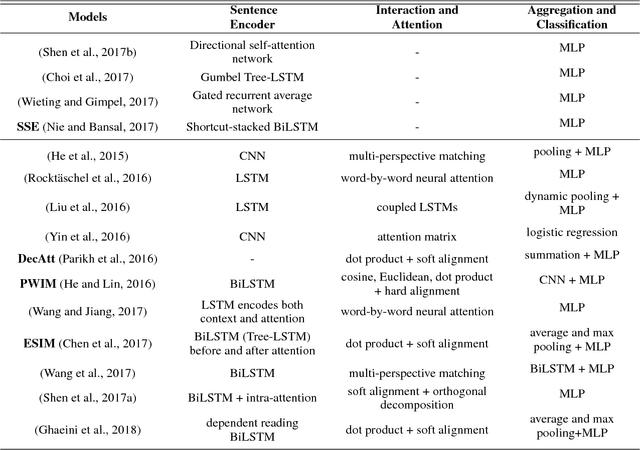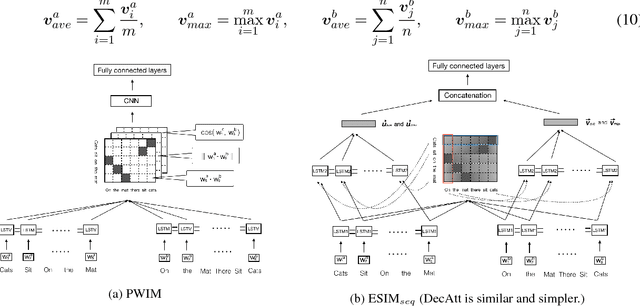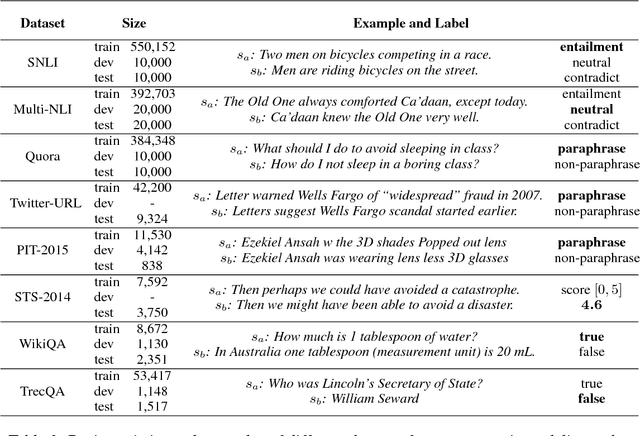Neural Network Models for Paraphrase Identification, Semantic Textual Similarity, Natural Language Inference, and Question Answering
Paper and Code
Aug 23, 2018



In this paper, we analyze several neural network designs (and their variations) for sentence pair modeling and compare their performance extensively across eight datasets, including paraphrase identification, semantic textual similarity, natural language inference, and question answering tasks. Although most of these models have claimed state-of-the-art performance, the original papers often reported on only one or two selected datasets. We provide a systematic study and show that (i) encoding contextual information by LSTM and inter-sentence interactions are critical, (ii) Tree-LSTM does not help as much as previously claimed but surprisingly improves performance on Twitter datasets, (iii) the Enhanced Sequential Inference Model is the best so far for larger datasets, while the Pairwise Word Interaction Model achieves the best performance when less data is available. We release our implementations as an open-source toolkit.
 Add to Chrome
Add to Chrome Add to Firefox
Add to Firefox Add to Edge
Add to Edge